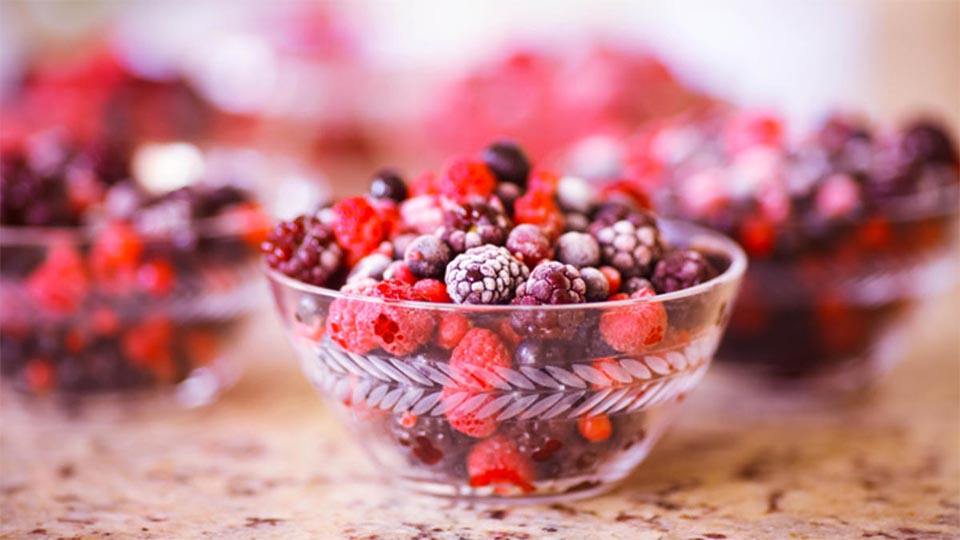There are a lot of ways to thaw frozen food safely. Some people put it in the fridge, others put it in water, and others just opt to cook it straight from frozen. In order to keep you and your family safe, there are right and wrong ways to thaw frozen food. Below is a list of common but risky ways you might be defrosting your food from the freezer, as well as better methods to use.
1. You let your meat thaw at room temperature.
The Problem: Leaving food (especially meat) at room temperature puts it in the 40-140F temperature zone where bacteria will grow on it like nobody’s business. If the food isn’t properly cooked after that, there is a big risk that you’ll get sick.
The Solution: The USDA recommends three ways of thawing your meat. The first is using a cold water bath where you need to change the water out when it starts to get warm. The second is putting it in the fridge and waiting for it to thaw. The third is using your microwave, but you’ll need to cook it immediately afterward.
2. You thaw your steaks before cooking them.
The Problem: Simply put, you’re thawing your steaks before you cook them.
The Solution: The video above has been circulating, showing that you can cook a fine steak straight from frozen. According to the video, steaks cooked from frozen lose less moisture, have less overcooked meat, and are actually tastier. Watch the video to learn more!
3. You thaw your fish before cooking them
The Problem: Apparently this applies to fish too. There are many websites dedicated to teaching people how to cook fish from frozen. When you thaw fish, there’s a very high chance it will get mushy and tasteless, which will wreck your dinner.
The Solution: This website has all the information you’ll ever need on cooking fish from frozen. They include a variety of techniques and cooking styles so you can have that firm, delicious, perfectly cooked fish instead of some mushy garbage.
4. You’re not sure whether veggies need to be thawed.
The Problem: Don’t feel bad for not knowing this one because I didn’t. It’s a learning process. If you cook vegetables the wrong way, they turn into tasteless mush.
The Solution: The general consensus seems to be that steaming them is the best way to cook frozen vegetables. Be sure not to add frozen veggies to your dish until the very end; if they cook for too long frozen they’ll get mushy. When in doubt, steam them or Google it because different veggies seem to tolerate different cooking methods better than others.
5. You put frozen food into hot oil before clearing the ice off.
The Problem: You take frozen foods out of the freezer and drop them right into the pan or fryer. This is a bad idea; frozen water and hot oil have a violent and potentially dangerous reaction that results in aggressive sputtering. If the oil sputters on the heating element, it can cause a fire.
The Solution: When you take food out of the freezer, try removing as much of the ice as possible. Scrape it off, or run some cold water over it to get the ice crystals off. The less ice on your food, the less sputtering when it’s dropped into hot oil and the safer you’ll be.
6. You cook frozen foods at the same temperature as their thawed counterparts.
The Problem: You have a dish that is frozen. You know what temperature to cook it at if it’s thawed, so you just cook the frozen version at the same temperature for a little longer. This results in overcooked food but you feel like you have to in order to get the whole thing cooked.
The Solution: The general consensus is to reduce the cooking temperature by 25 degrees and extend the cooking time by 50%. If you typically cook something at 350 degrees for 10 minutes, cook the frozen version at 325 degrees for 15 minutes. That should reduce burning and overcooking while still cooking it all the way through.
7. You try to thaw fruit too fast.
The Problem: Fruit is particularly fragile when it comes to thawing. Many people don’t think about thawing fruit until they need it, and this results in thawing them too fast. Thawing fruit too fast can lead to mushy, nasty fruit.
The Solution: Try as hard as you can to anticipate your needs. The best way to thaw fruit is either under cold water or in the refrigerator. Both methods can take a while, so try to plan ahead!
Featured photo credit: frozen food aisle/Business 99 via business99.net













































